These homemade pizza tips, tricks, and hacks will instantly take your pizza game to the next level. Having been eating and breathing pizza for the last few years, these tips are what I wish I knew when I first started out.
Learning to make homemade pizza from scratch can be quite intimidating, but it doesn’t have to be. As well as being much cheaper and healthier than takeaway pizza, it is also much tastier and far more satisfying.
I’ll go into these tips, tricks, and hacks in more detail below.
Fresh mozzarella is one of the nicest ingredients you can add to a pizza. The delicious creaminess and wonderful soft texture lends itself to being one of the best pizza toppings, not to mention the most popular.
The problem is that fresh mozzarella contains a very high percentage of water. As it is cooked, this moisture is released onto the top of the pizza and it can make the pizza soggy. This is especially true of pizza cooked in a home oven, where the temperature is not as high as in a pizza oven.
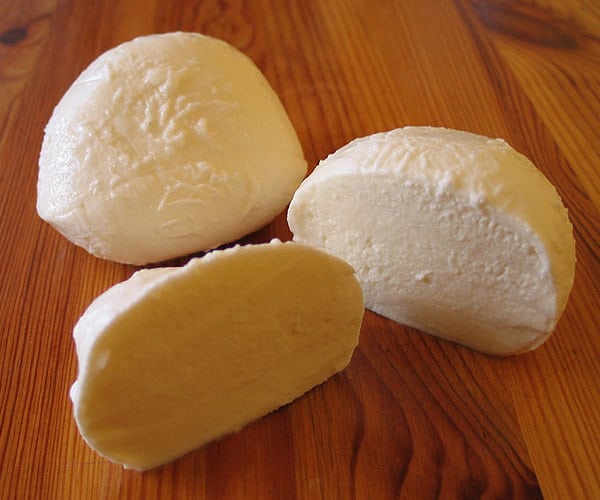
But even in a pizza oven, removing the moisture will make for a much nicer pizza. Not only is there moisture in the mozzarella itself, but there is also a brine solution (salt water) that the mozzarella is preserved in.
Once the packet is opened, most of this brine will run away (I suggest cutting the packet open over a sink). However, the mozzarella itself will still be very moist.
I recommend first squeezing the mozzarella over the sink (in your hands) to remove as much of the water as you can. To remove the rest, you can tear it up and place in on a couple of sheets of kitchen roll. Then take a couple of extra sheets of kitchen roll and sandwich the mozzarella in the middle.
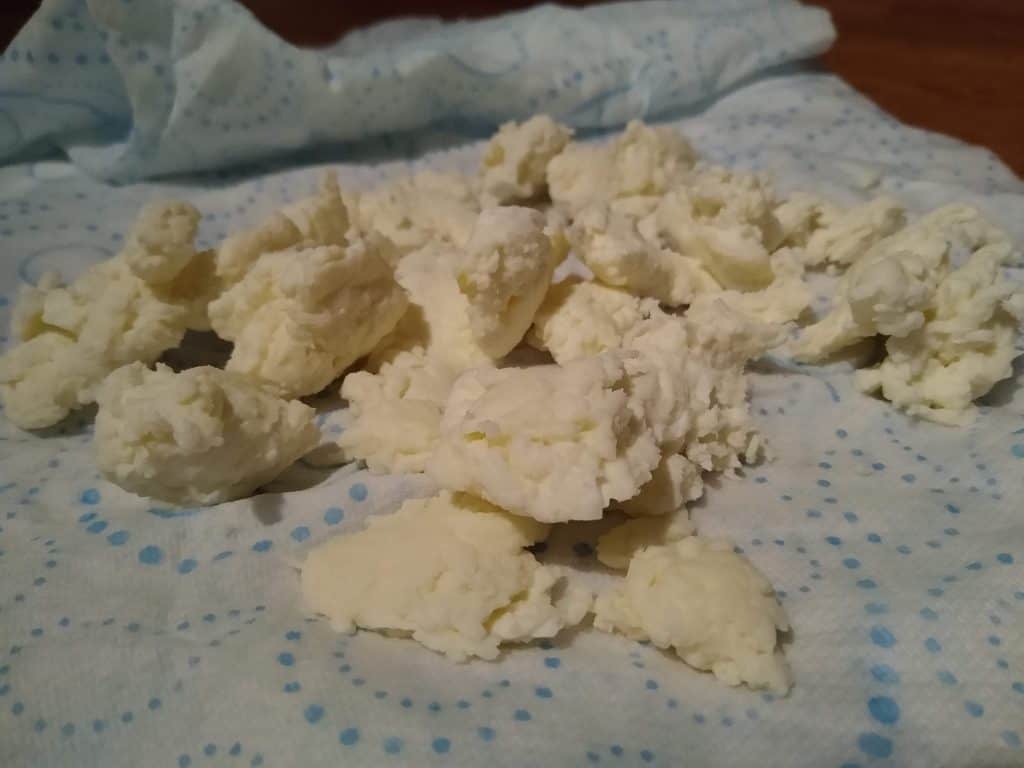
At this stage you can either pat it dry and use it straight away or leave it out for a while like this before using. If you are super prepared you can do this hours in advance and place it in the fridge to keep for when you’re ready to use it.
The result will be a much drier mozzarella that, when melted, will still produce that wonderful creamy soft cheese, but without the sogginess.
This homemade pizza hack is often overlooked but it’s such a simple one and takes barely any time at all. With this simple hack, you are virtually eliminating the soggy Margherita for good.
The other option is to use grated mozzarella which contains very little moisture at all. Perhaps it doesn’t taste quite as good and the texture isn’t there. It certainly is an easy option though!
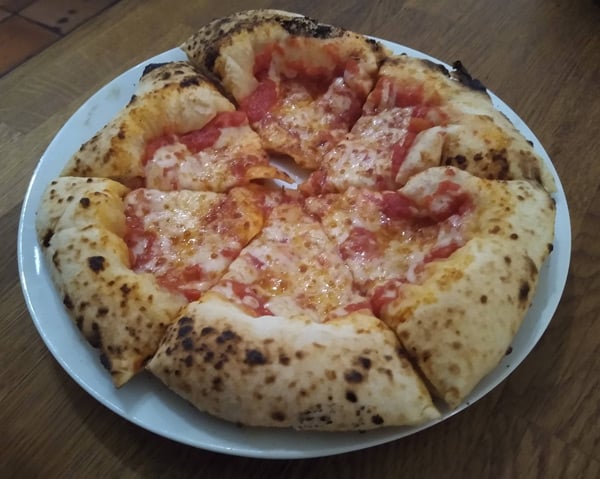
For more information on how to avoid a soggy pizza, check out my article here.
Most people tend to add parmesan cheese to a pizza before cooking. However, adding the cheese after cooking preserves more of the cheese’s flavour.
When cheese is cooked it tends to lose some of its flavour characteristics. In the case of mozzarella this isn’t an issue as mozzarella is a mild cheese anyway, and the reason it is used is for its melting characteristics.
On the other hand, parmesan doesn’t add much in the way of texture once it is melted. And because it is quite a strong cheese, it loses a lot of its flavour.
One trick to overcome this is to grate the parmesan on the homemade pizza once it comes out of the oven. This way, it will still melt a little on the warm pizza, but it will retain more of its flavour.
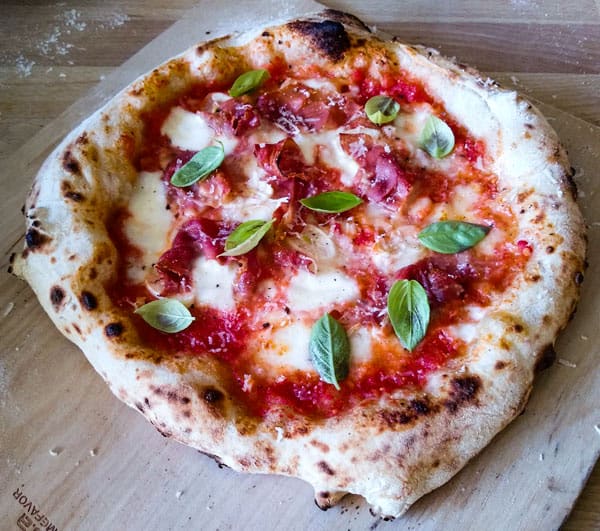
When I first started making homemade pizza, I didn’t realise that adding parmesan was a thing. Once I started adding parmesan, it took the flavour of my pizza to the next level.
Parmesan adds a bit of depth of flavour. This is especially true on a Margherita, where using only mozzarella would result in a more bland experience. Adding the parmesan after cooking, however, was a trick that I only discovered much later on, but I wish I’d found it in the beginning.
Many people ask me about how much yeast to add to pizza and I always tell them to add a little more yeast than you need.
The reason is that if your pizza is overproving, you can always knock it back to slow it down. Whereas, if your pizza is underproving, it is very difficult to speed it up.
Knocking back dough is a technique used widely in bread making and it is essentially removing all the air (bubbles) that is built up in the dough. This air is caused by the fermentation of the yeast, and it is a good thing.
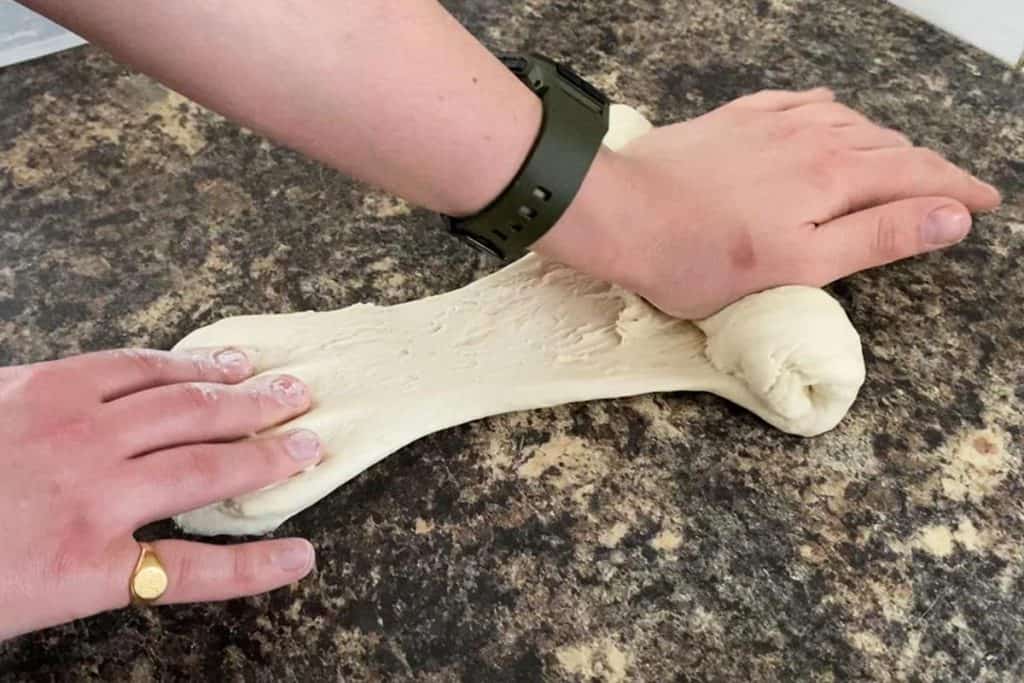
However, dough can overprove, losing its strength and stretchiness. Knocking the dough back allows it to prove again and it also evens the yeast out in the dough. This means that when it proves again, the dough will come back better than it was before.
Faced with homemade pizza dough that doesn’t have enough yeast in it and is overproving, you basically have only 2 options:
For these reasons, adding a little too much yeast is favourable to not adding enough. If you find that you have large bubbles in your dough you can knock it back and re-shape it. The dough will then prove again and should be good to use in 1-6 hours.
1-6 hours may sound like a large difference but it will depend on how long your prove is. If you have done a short prove, like 3 hours, then you can knock your dough back and it can be ready to use in as little as 30 minutes to an hour.
If you have done a long prove like 48 hours, then it may take as long as 12 hours for your dough to be ready to use. The more you get used to the process, the easier it will be to judge.
You can also knock the dough back different amounts. If your dough is way overproving, for example, you can knock all the air out of it completely and it will take a while to prove again. If your dough is only slightly overproved, you can knock it back gently to delay it a little bit.
I also find that people tend to underprove dough in general, as they think that bubbles are a bad thing. This is not the case, however. If you want those big, puffy, crispy yet soft crusts, you have to embrace the bubbles!
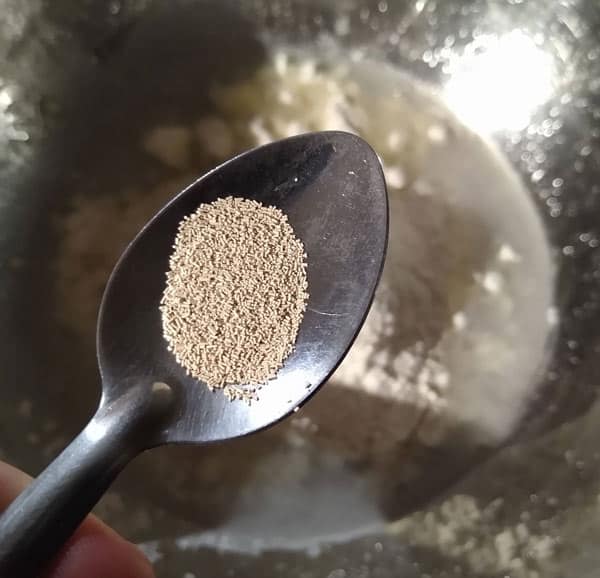
A great tip, therefore, is to add more yeast than you think. You can always knock your dough back if needed. Or if not, just enjoy wonderfully light and bubbly pizza crusts!
When adding the water to your homemade pizza dough, most recipes tend to tell you add the flour to the mixing bowl first and then add the water after. This will work fine, but in my opinion, you can do better.
I’ve taken advice from the artisan bread world, and I add the water to the bowl first. This makes it much easier to mix in the flour, as it becomes submerged in the water instantly. The flour becomes hydrated much more quickly and the initial mixing time is reduced.
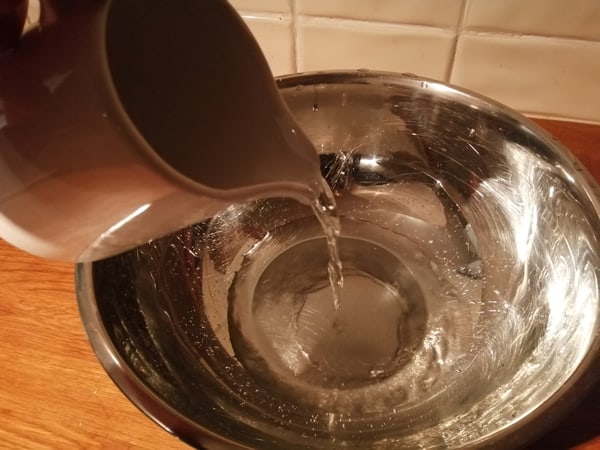
This may seem like such a trivial step but trust me, once you’ve tried this homemade pizza tip you won’t go back.
Olive oil and pizza go hand in hand like mozzarella and pizza, but when to add the olive oil is hotly contested. When I first started making pizza I always used to add the olive oil before cooking.
However, I quickly faced the problem of soggy pizzas. This is when I decided to try adding the olive oil after cooking. And wow, did it make a difference. This is especially the case when cooking homemade pizzas in your home oven.
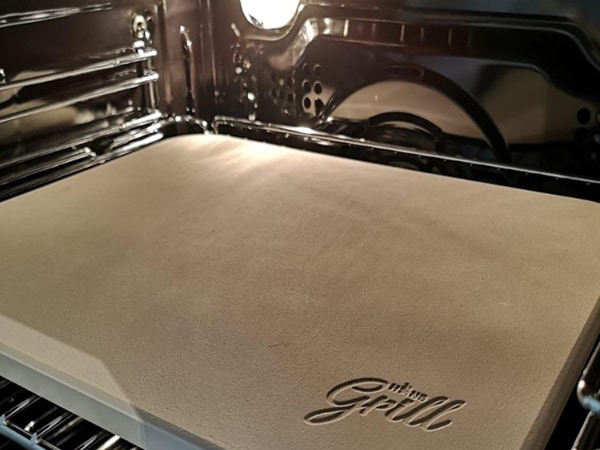
In domestic ovens, where temperatures are lower than pizza ovens, it is easy for the pizza to become soggy. By waiting until after cooking to add the olive oil, you can see if the pizza needs it before adding it.
Even when using a pizza oven that reaches extremely high temperatures, the olive oil is best added after cooking, in my opinion. It doesn’t really serve any purpose other than adding more moisture, which is exactly what we are trying to avoid.
Any flavour the olive oil provides is reduced as it cooks, just as with parmesan. I therefore recommend adding olive oil after cooking only.
This way you can add as much olive oil as you see fit once you have seen how the pizza has turned out. As well as resulting in a better cooked pizza, you will also enjoy the extra flavour that the uncooked olive oil brings (if you like olive oil that is!).
When I first started adding basil to pizza I did it because I thought it was the done thing and it made the pizza look nice. In truth, I was doing it all wrong.
Adding the basil before cooking kills all the flavour and renders the basil useless (other than for a little decoration). My favourite way to add basil on a pizza now is to add it after it is cooked, and before the olive oil is added.

This way none of the flavour of the basil is lost in the cooking, and it becomes coated in olive oil. My other favourite tip is to add lots of the small leaves, or tear the large leaves. Adding it this way means you get a little taste of basil with every bite.
This was another one of those tiny homemade pizza tips that instantly boosted the flavour of my pizza. I know basil is not for everyone but try this on your pizza next time. If nothing else, it will take your Margherita to the next level.
There are as many different garlic gadgets on the market as there are ways to chop and dice it. What I have found to be the most effective, most traditional, and easiest way to prepare garlic is to simply slice it thinly.
The easiest way is to gradually press on the clove with the blade of a knife, using the heel of your hand, until you hear it crack. Then chop off the ends, and you should find that the skin comes off easily. From there, simply slice the garlic thinly, using your knuckles as a guide. Please watch your fingers!
As well as being easy and mess free (and gadget free), it is also the nicest way to have garlic on a pizza, in my opinion.
When I first started adding garlic to my pizza I used to dice it as finely as I could. Whilst this does help to distribute the garlic evenly, I find you miss out on those explosions of flavour that you get from nice big, thin slices of garlic.
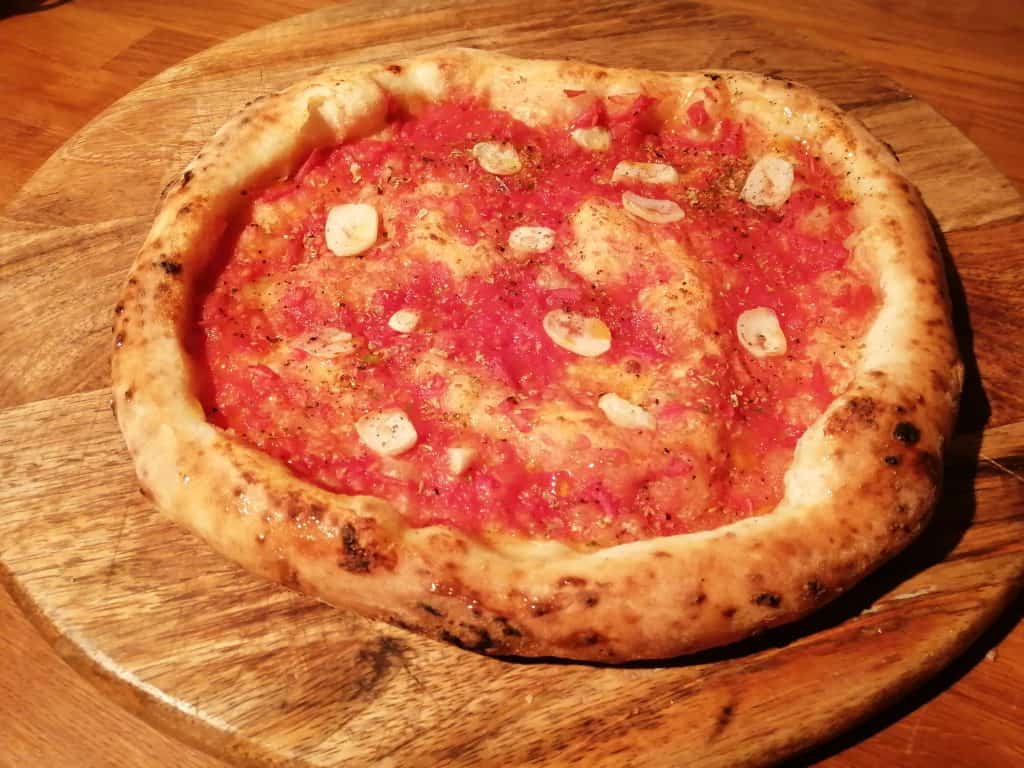
Garlic is somewhat of an acquired taste, and if garlic is not your thing then by all means try finely dicing it first. But once you get a taste for garlic, try slicing it up and trust me, you’ll enjoy this simple homemade pizza hack!
Tomato sauce is the one of the keys to the vast majority of great pizzas. But most people don’t pay any attention to when to add the sauce.
In a pizza oven, that gets up to very high temperatures (450 degrees Celcius), the pizza cooks so quickly that the tomato sauce doesn’t get chance to overcook.
In a home oven, where temperatures are lower, however, the pizza takes a long time to cook (6 – 10 minutes). The tomato sauce can easily overcook in this time, causing the pizza to become dry.
I therefore recommend cooking the pizza for 1 or 2 minutes first, before adding the tomato sauce and the rest of your toppings. This will reduce the amount of time that your sauce and toppings are on the pizza for and it will prevent them from overcooking.

This is without doubt my favourite hack for cooking homemade pizza in a domestic oven. If you don’t have a pizza oven, be sure to give this one a try! Click here to find out more about preventing a soggy pizza.
Tinned tomatoes, and even many fresh tomatoes, contain a lot of water. In order to produce the best pizza possible, we need a sauce that is thick, so that the pizza does not become soggy.
There are 2 ways to remove the excess water from tomatoes:
It may surprise you to find out that the second option, sieving tomatoes and not cooking them, is actually the most traditional. By sieving the tomatoes, you thicken the sauce without removing any of the flavour, which can happen in the cooking process.
Simply pour your tin of tomatoes/fresh tomatoes into a blender (or pestle and mortar) and then sieve them in a fine mesh sieve until they reach your desired consistency. You can then season them with salt and pepper to you liking (and a little garlic and basil if you like).
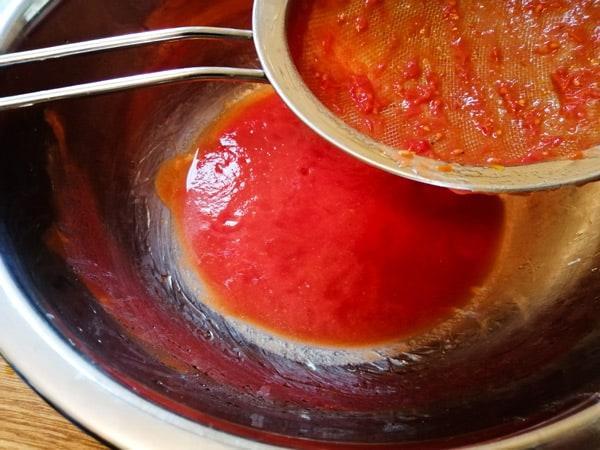
For me, this method was a game changer. Not only did it speed up my preparation time and make life easier, it also resulted in more of a tomato flavour in the sauce.
One thing that is worth mentioning is that you should buy some good quality tinned tomatoes if you go down this route. Because you will be able to taste the tomatoes more, the quality of them becomes more important.
Try this tip out, I’m sure you’ll be impressed!
If you don’t have any tinned or fresh tomatoes but you have some tomato paste, or tomato puree, then this hack is for you! Simply mix 1 tablespoon of water to each tablespoon of tomato paste until you have enough sauce.
This will produce quite a thick sauce but it should be about right for pizza. If you find it too thick just add a little more water until you get it to the right consistency. Likewise, if the sauce is a little thin, just add some more tomato paste.
Then taste the sauce and add a little salt and pepper if it is required.
This is such simple hack but it’s saved me many a time when I’ve been making homemade pizza and I suddenly realise I don’t have any tomatoes!
The best way to cook homemade pizza is on a pizza stone but if you don’t have one, a baking tray will do the trick. A simple hack is to turn the baking tray upside down and cook the pizza on the back of it.
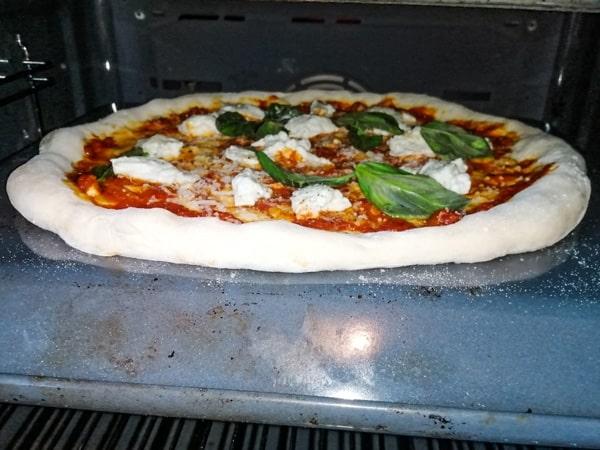
This will allow you to easily get the pizza on and off the tray without worrying about the lip. Also, the extra height will help to get your pizza closer to the top of the oven, which is generally the best place to cook your pizza.
As an extra tip, sprinkle a little flour on the baking tray before loading your pizza onto it. This will help to prevent your homemade pizza from sticking.
A pizza peel is a fantastic tool that helps you to het the pizza in and out of the oven. It is essentially a chopping board with a handle. But if you don’t have a pizza peel then try using a chopping board.
Wooden chopping boards generally work best but any will work. Just make sure you sprinkle plenty of flour on your chopping board before sliding your pizza onto it.
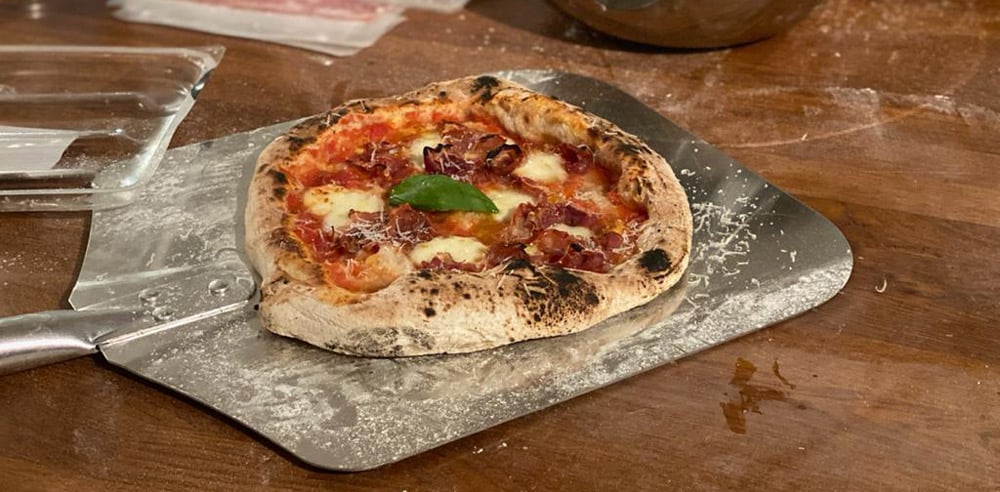
If you don’t have a spare chopping board then you can drag your pizza straight onto the tray. Be careful if you have preheated your tray though, you will probably need someone to help you. The easiest way is to get someone to hold the tray for you while you drag the pizza on.
The easiest way is to make sure your pizza is well away from the edge of the bench, and to place your peel down next to it. Sprinkle your peel with flour then, in one movement, carefully but positively drag the pizza with both hands, onto the peel.
Don’t worry if the pizza isn’t round, once the pizza is on the peel you can stretch the edges out a little to make it nice and round. Be sure to shake the pizza back and forth on the peel to make sure it isn’t stuck. Now you can load the pizza into the oven as quickly as possible.
If you are using a chopping board instead of a peel then the technique is the same, but it will be a bit trickier.
If you have a drawer directly beneath your worktop then one nice hack is to open the draw and rest your peel/chopping board on the draw. From here, you can pull the pizza swiftly onto the peel.
Fresh mushrooms are an excellent pizza topping and they work particularly well with ham. The best way to prepare them for pizza is to slice them as thinly as you can. The thinner the mushrooms are, the better they will cook.
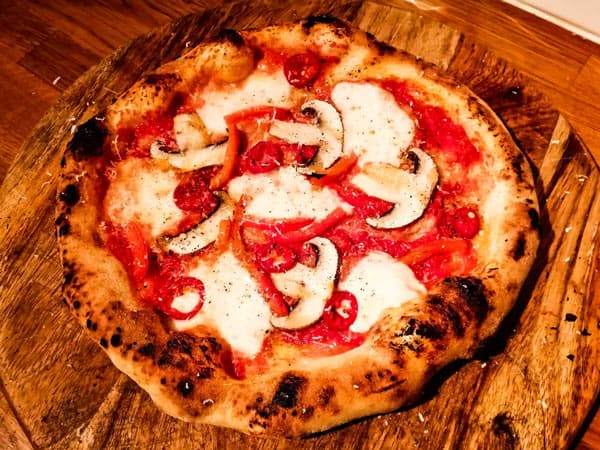
This may seem simple but I think it’s a very useful tip. I have seen many pizzas, even in restaurants, served with chunky mushrooms.
They don’t cook properly on the pizza and you end up with raw mushroom. Not many people like raw mushroom, so this is definitely a tip worth considering.
Cutting pizza with scissors is a great way to slice a pizza. Many people swear by scissors and actually prefer using them over pizza slicers.
Pizza slicers easily blunt and then they become tricky to use and they can spoil the crusts. By using scissors you can carefully and precisely slice the pizza exactly how you want it.
This is one of my favourite and most enjoyable, pizza hacks. The more I cook pizza, the more I find myself cutting it with scissors. It’s just much easier than using a blunt pizza slicer, and it’s quite fun!
Next time you’re stuck without a slicer, or you’re sick of using a blunt one, or you’re just intrigued, give it a go. You may be surprised how well this simple homemade pizza hack works!
Who knows, you may ditch your pizza slicer all together!
There are many ways to prevent a pizza from being soggy in the first place, such as reducing the amount of water in your toppings. However, once the pizza has come out of the oven soggy, it’s too late for that.
There’s a simple hack to fix this. Just pat the pizza lightly with some kitchen roll. You can remove as much moisture as you want. If you end up removing a little too much water, don’t worry, just drizzle on some olive oil.
Whilst this won’t turn a soggy pizza into a perfect one, it will save the pizza. It’s a useful hack, and trust me, I’ve had to use it my fair share of times!
Gluten free dough is notoriously difficult to make. With recipes varying so much online, the safest option is to buy a gluten free flour blend.
There are many different gluten free flour blends available, some made specifically for pizza dough. Buying a blend will save you a lot of time and effort, and will generally lead to better results.
I can’t speak for all blends but I have used Caputo gluten free flour blend and the pizza turned out excellent. All you have to do is mix the flour with water, yeast, and salt just like a regular dough.
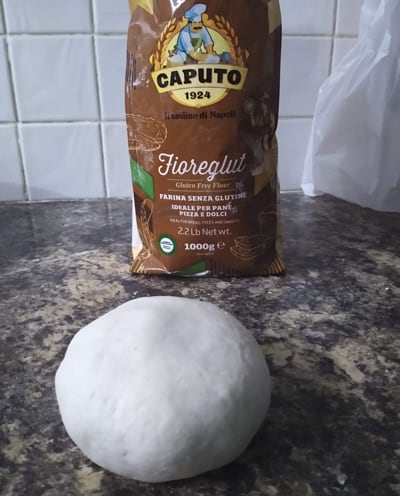
This blend was particularly expensive but in my case it was worth it since I was only making a couple of gluten free pizzas.
If you intend on making a lot of gluten free dough then you want to try sourcing your own ingredients to mix. This will probably save you money but finding the right blend will be tricky.
I suggest you buy a quality blend like Caputo first to understand what you’re looking for. You may like it so much that you stick with it!
Ham is a common pizza topping, and it is so versatile, complimenting most other toppings. When to add the ham, however, is up for debate. One simple tip is to buy cured ham to add before the pizza is cooked.
This ensures that as the pizza cooks, the ham doesn’t overcook. It will go a bit like crispy bacon but it will still retain a lot of its flavour. In fact, prosciutto ham (Italian cured ham/parma ham) is one of my favourite pizza toppings.

If you have cooked ham then your best bet is probably to add it after the pizza is cooked, otherwise it may go tough and dry.
Using semolina flour for shaping is a great way to achieve a crispy crust and base. Simply dust your pizza dough liberally with semolina, instead of regular flour, and shape as normal.
The semolina helps to create a wonderful charring and colour on the pizza. It works particularly well in domestic ovens and lower temperature ovens, where getting some charring can be difficult.
In pizza ovens, however, semolina can cause too much charring. This can lead to a burnt taste, which is not necessarily what you want. By all means try it though, you may find you prefer it, many Italians swear by semolina flour.
An infrared thermometer is an excellent investment if you own a pizza oven. The temperatures in these ovens can fluctuate drastically and trying to regulate the temperature can be difficult.
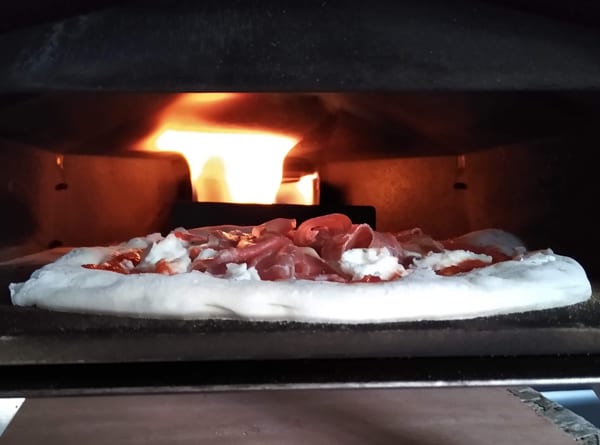
With a laser thermometer you can measure the exact temperature of the stone. This makes controlling the heat much easier.
When I first got my pizza oven I found myself guessing how hot the oven was. Sometimes it would be too hot and the pizza would burn, other times it wouldn’t be hot enough. Once I got a laser thermometer, it completely transformed the quality and consistency of my pizzas.
If you own a pizza oven at home then I strongly recommend buying an infrared thermometer, they’re relatively cheap. You can pick one up on the internet for around £15. Trust me, you’ll thank me later!
On a side note, the ideal temperature is generally considered to be around 430-470 degrees Celcius.
When proving dough in a bowl, you will need to keep it covered so that it doesn’t dry out. Using a towel is not ideal as it is porous (lets air through), which dries out the dough.
A damp towel can prevent the dough from drying out but it not ideal for long proves because over time the towel will dry. For this reason, cling film is commonly used.
However, using cling film is wasteful and harmful to the environment.
One great hack is to use a shower cap. They can be bought cheaply online and because they are elastic, they last a long time. This is in contrast to cling film, that only works once or twice and then it stops clinging.
(And don’t even mention that cheap stuff that doesn’t cling at all! It should be called “doesn’t cling film”!)
Buy a couple of cheap shower caps online and give this simple hack a try.
When kneading pizza dough, you will have to use your hands. But when you are first mixing the ingredients together you can use a spoon to stop your hands from becoming messy.
A fantastic hack is to use the wrong end of the spoon (that’s right, the wrong end!). This may sound counter-intuitive but there is method in the madness.
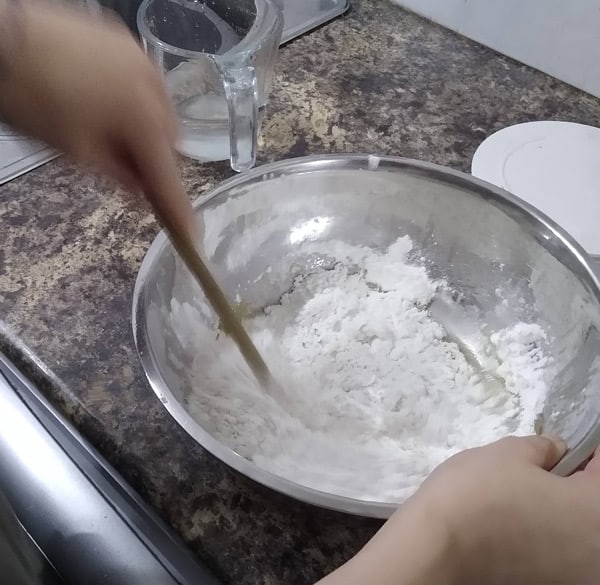
When using the spoon the correct way, dough gets stuck to the spoon and is very difficult to get off. If you use the wrong end of the spoon, you can simply pull the dough off by dragging your hand from the top of the spoon to the bottom.
In one easy movement, all the dough comes off the spoon and ends up in the bowl. It’s a life saving hack! OK not quite, but it saves you time and what’s more, your hands don’t get messy!
There’s far more to pizza than a few tips, tricks, and hacks but I really wish I knew these when I started out. Having said that, finding out what works for you is part of the fun with making homemade pizza.
Hopefully these tips work for you and save you a lot of time and effort in your pizza making.
Have fun, and get mixing!

I’m Tom Rothwell and I’m super passionate about all kinds of homemade pizza! In the last few years I've been on a quest to find the perfect pizza. Now I'm sharing what I've found out with the world!

If you're interested in hiring me for your event in the UK, feel free to check out my website with the link below.
Pizza Catering
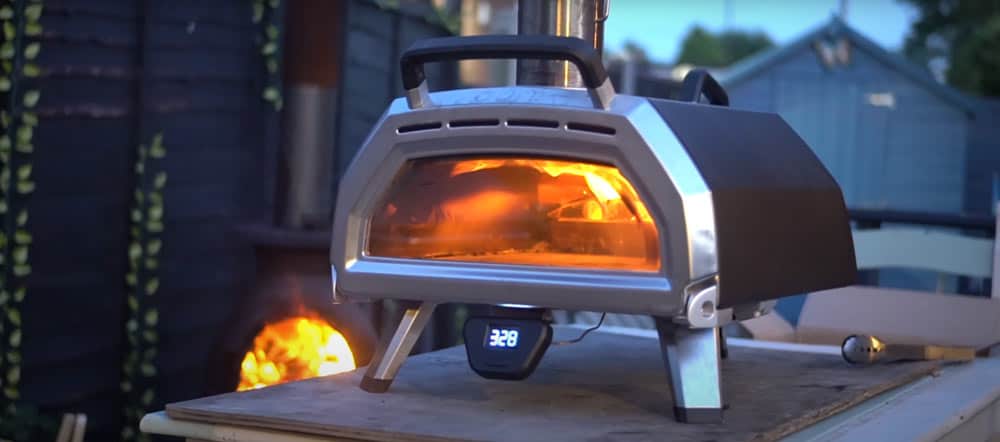
I often get asked what type of oven I use for my pizzas. Well, I use a pizza oven made by a company called Ooni.
The range of pizza ovens that Ooni offers is just brilliant. They cover all bases, and all price points. There's affordable and portable models such as the Fyra 12 Pizza Oven and then there's state-of-the-art models such as the Karu 16 Pizza Oven pictured below.
In all honesty, I would say that the oven makes a huge difference. If you're looking to make authentic Italian pizza, a pizza oven is a must.
By clicking the link below and purchasing from Ooni, you would be supporting this website. I've been using their ovens for a long time now and I wouldn't recommend them if I didn't believe in their products.
Time to make some amazing pizza!

I’m Tom Rothwell and I’m super passionate about all kinds of homemade pizza! In the last few years I've been on a quest to find the perfect pizza. Now I'm sharing what I've found out with the world!

If you're interested in hiring me for your event in the UK, feel free to check out my website with the link below.
Pizza Catering